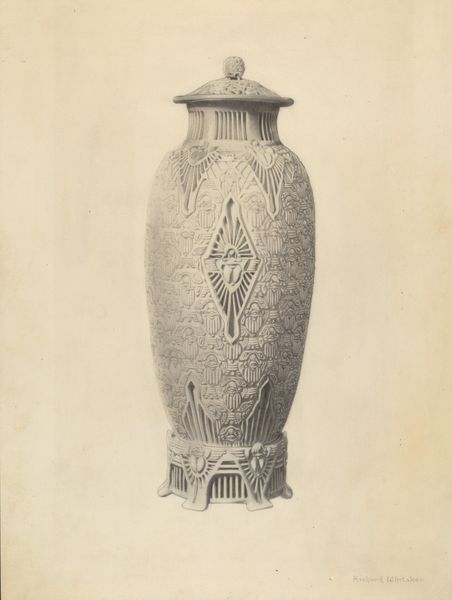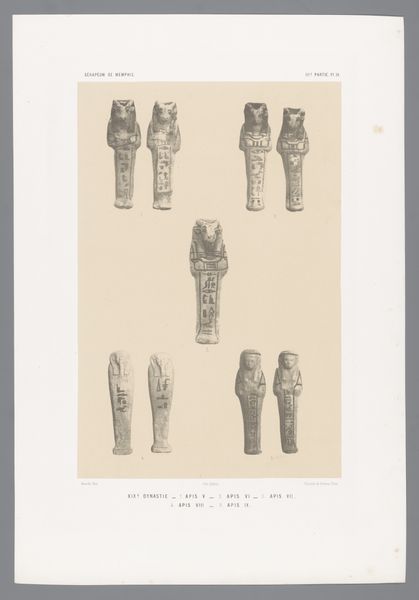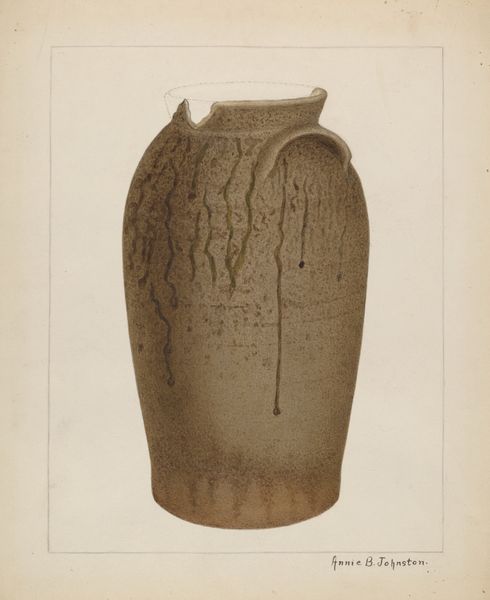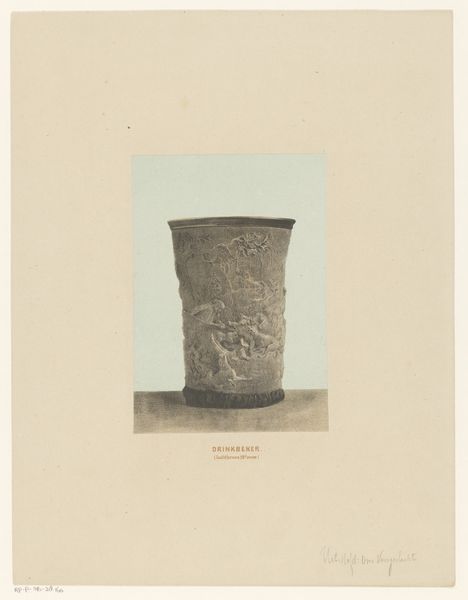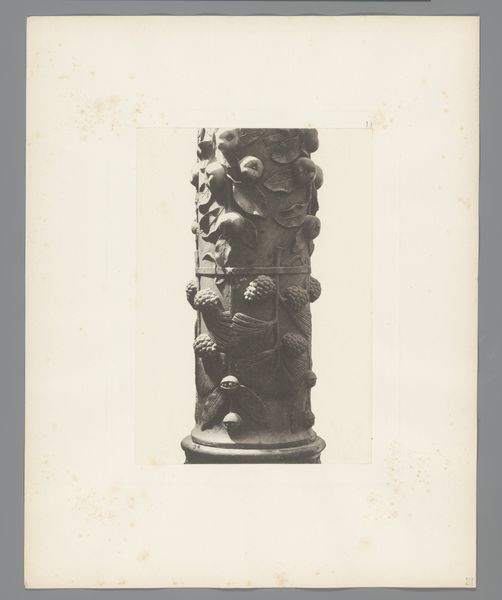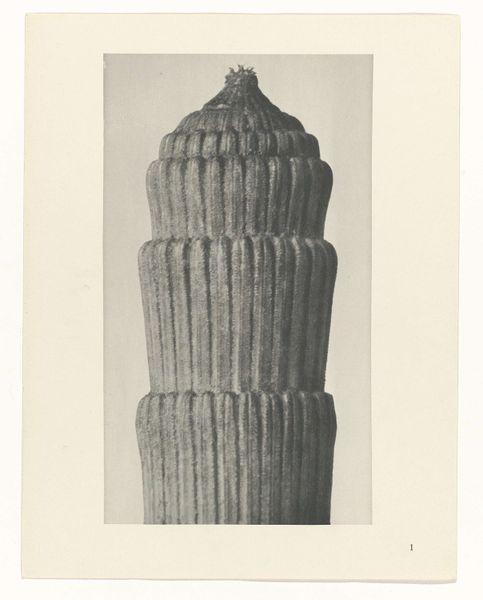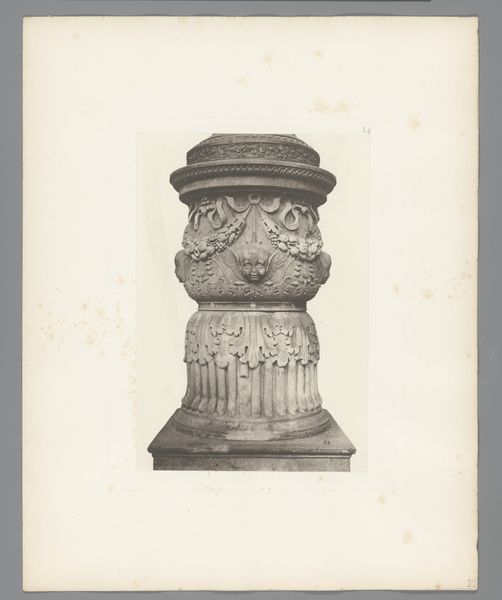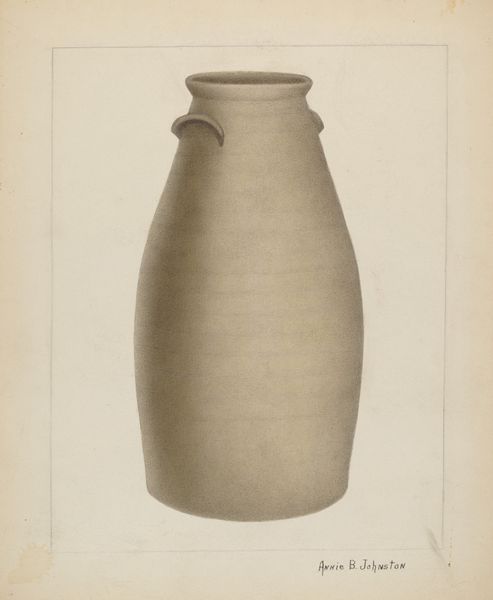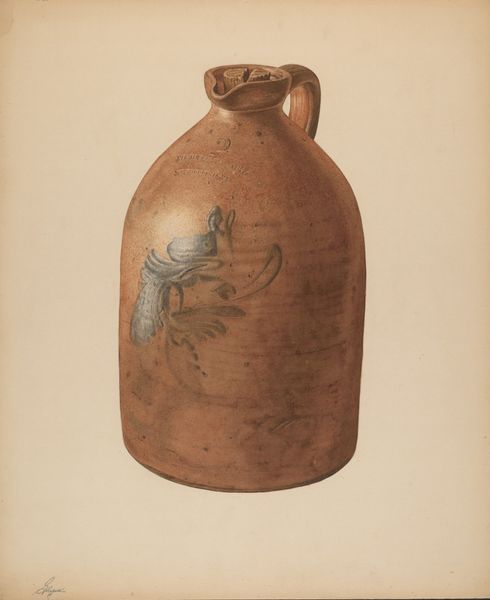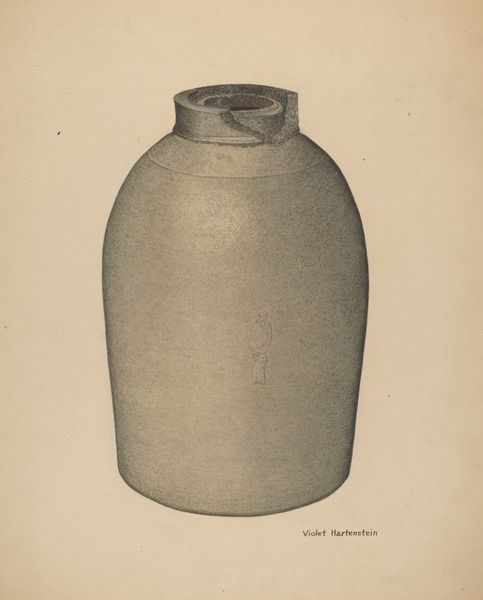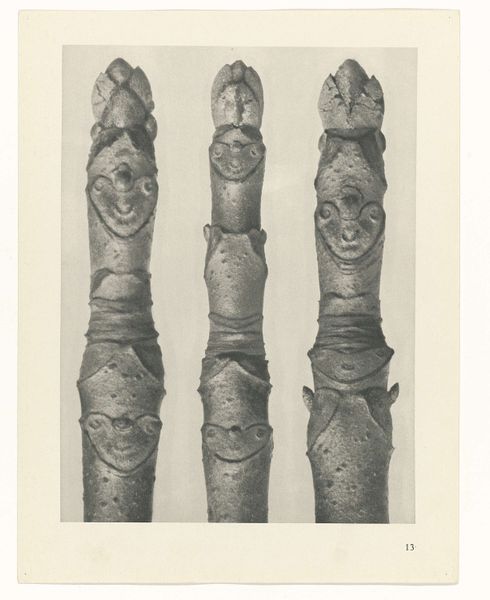
Vier canopen met de kop van Amset, gevonden bij het Serapeum te Memphis 1852 - 1857
0:00
0:00
photography, gelatin-silver-print
#
ancient-egyptian-art
#
photography
#
ancient-mediterranean
#
gelatin-silver-print
Dimensions: height 358 mm, width 227 mm
Copyright: Rijks Museum: Open Domain
Curator: Welcome. Here we have a photograph by Charles Marville, taken between 1852 and 1857. It's entitled "Vier canopen met de kop van Amset, gevonden bij het Serapeum te Memphis." That translates to "Four canopic jars with the head of Amset, found at the Serapeum in Memphis." Editor: Wow, it’s really striking how the image quality gives such solidity to these ancient artifacts. They have such gravitas... ghostly and present simultaneously. I feel the weight of centuries pressing down. Curator: Marville, primarily a cityscape photographer, adopted the then relatively new gelatin-silver print process. Notice how his careful lighting emphasizes the jars’ three-dimensional form, and draws out the intricate details. Editor: It’s amazing, isn't it? Like, you have these cylindrical vessels topped with somewhat abstract human head figures. Reminds me a little bit of cubist portraiture somehow! I wonder if he realized he was inadvertently playing with form in such a modern way? Curator: The choice to isolate the canopic jars against a stark background forces a rigorous concentration. Note how the eye is drawn not only to the variations in texture, but also to the regimented glyphs adorning each vessel. The arrangement speaks to notions of seriality and typology. Editor: I am just totally hypnotized by how beautifully light plays over them, that sepia tone against that pale parchment paper…It feels almost like peering into a dream. I get a sense of profound stillness. Curator: Marville's "Vier canopen" represents a fascinating confluence of ancient artifact and modern photographic technique. The choice of presenting this record without additional context pushes us to evaluate what’s there in front of us—how shapes, tones, and even negative spaces operate within the picture plane. Editor: Absolutely! It's about more than documenting history; Marville manages to create something strangely eternal out of that record. It's a quiet piece, yet it speaks volumes. It makes me consider photography as a whole. What really lasts through the ages.
Comments
No comments
Be the first to comment and join the conversation on the ultimate creative platform.
